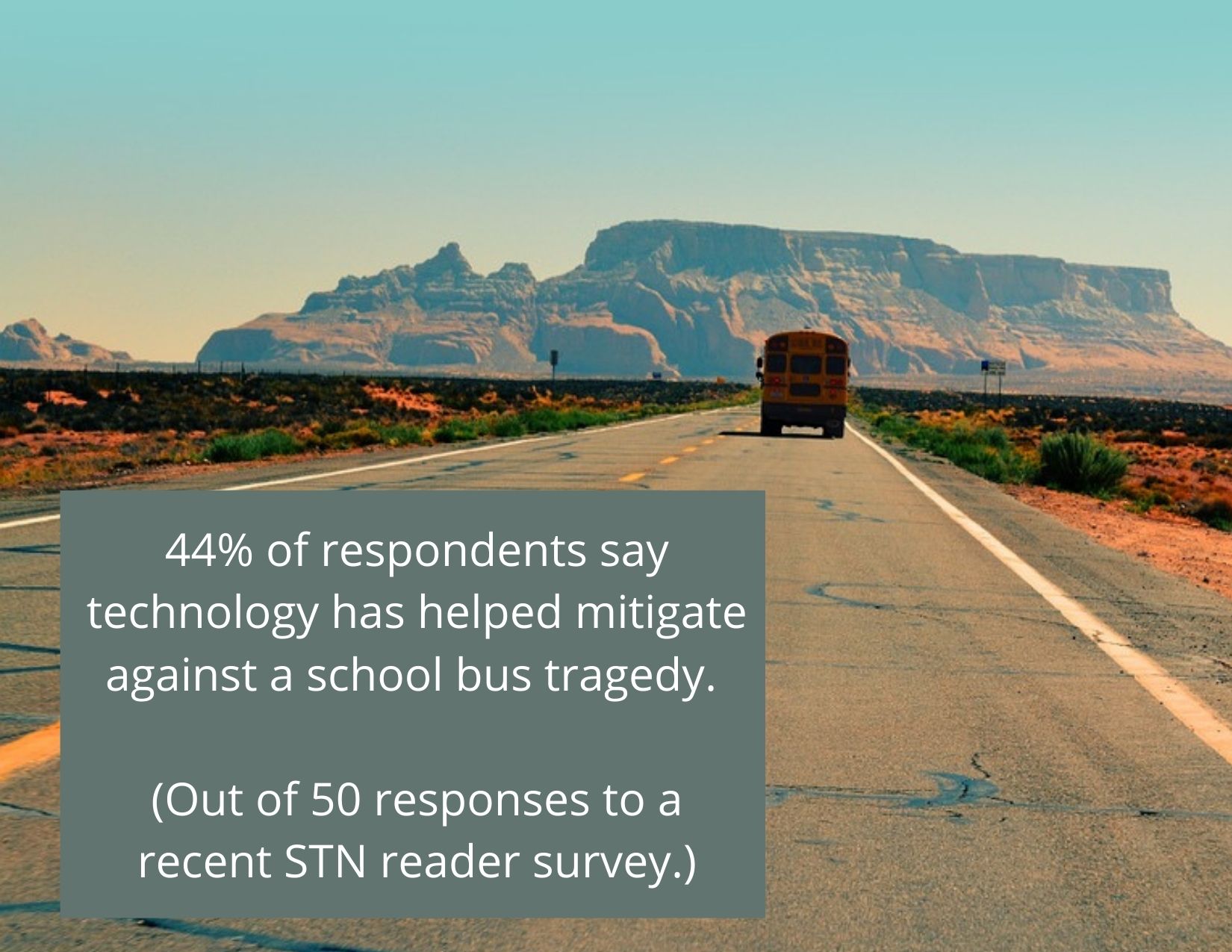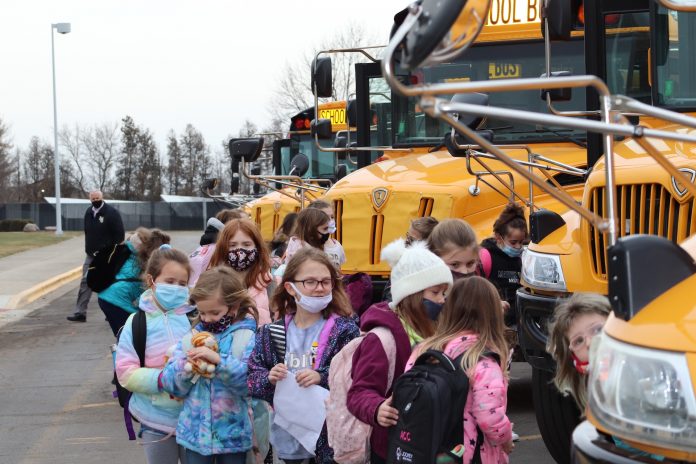With tight budgets continuing to plague the industry, some transportation directors speculate that obtaining any new technology this year will remain a challenge. Yet they confessed that engaging bus drivers in all purchasing decisions and continuously communicating with vendors is the secret sauce to running a successful department.
In a recent School Transportation News reader survey, 36 percent of 58 respondents over the holidays said that they involve their school bus drivers when making decisions on purchasing new vehicles, equipment or software. Kristy Drewitz, transportation coordinator for Madison-Grant United School Corporation in Fairmount, Indiana, is one example.
She said she currently has interior and exterior cameras installed on her 30 school buses and added that including bus drivers in the purchasing decisions is important to her. Drewitz said she wants her bus drivers to feel comfortable operating any technology that the school bus could be equipped with. As safety and efficiency enhancements are key factors when making any purchase, she said.
“We want our drivers to be comfortable operating their buses and any technology or enhancements it may be equipped with. Their input is valuable,” she said.
Before the department makes any purchases, she collaborates with not only school bus drivers, but all parties involved, including mechanics and administration.
“Our fleet mechanic is instrumental in researching products that may be beneficial to our transportation department,” Drewitz explained. “Depending on the type of purchase, we may include our technology department as well. The initial research is done on different companies offering the product or service, we have the company come in and demonstrate their products, and then we decide which product will give us the best service for our money. The mechanic and I also serve as sub bus drivers for our corporation and have some insight into the challenge’s drivers face and tools that could be helpful to them.”
Drewitz shared that because her school corporation is on the smaller side, engaging the administration on major purchases isn’t a daunting task. Often, administration personnel presents the transportation department’s purchase recommendations to the board of school trustees. “So, having them involved in the purchasing process can be very beneficial,” she added.
Because cost is always a consideration when purchasing new technology, Drewitz said she doesn’t know what the future holds for purchasing and her approved budget. But during 2020, Madison-Grant United School Corporation purchased two new conventional school buses and will be following its bus replacement plan this year.
“Cost is always a consideration,” Drewitz said. “We want to be good stewards of our resources and use them wisely to best serve our students and community.”
Meanwhile, Glenn Sykes, director of transportation for Alamosa School District in Colorado, initiated a five-year plan on technology adoption when he was hired five years ago. While he said the first step was transitioning the department from paper documentation to computer systems, he also wanted to implement student tracking technology and GPS.
When deciding on what to include in his five-year-plan, he thought back to his time as a bus driver and what he would have wanted. Though, when making any decisions going forward, he said it’s a team effort and feedback is welcomed from all aspects of the department.
Sykes said all documentation is now all cloud-based and all school buses are equipped with GPS and tablet technology. His department purchased Transfinder to help with routing and is in the process of rolling out student tracking technology through Synovia Solutions to monitor when students get on and off the bus.
The tracking technology is currently being used in one bus, as of the start of the second semester on Jan. 4, but Sykes said he hopes that within the next five weeks every bus and student rider will have the capabilities to scan on and off.
He said that he’s pleased with how fast elementary students have adopted the scanning technology. He added that because the district is currently busing a smaller number of children because of COVID-19, teaching and training students was easier to manage, which allowed for a smoother implementation.
Related: Bus Tracking Apps Should Anticipate Parental Needs
Related: Florida District Implements ID Scanners on School Buses for Student Tracking
Related: Implications of Student Tracing on School Buses to Track COVID-19 Infections
Related: Maryland School District Focuses on Student Safety, Updating Technology Amid Closure
Related: Pennsylvania School Bus Driver Navigates New Technology, Shares Challenges of the Job
“Once they get all the buses rolled out, we’ll go ahead and roll out the parent app to the parents — really get them that transparency,” Sykes said of the last big piece of the puzzle to the five-year plan.
In addition to GPS and tracking technology, Sykes also updated most of the district’s 25 school buses to LED lighting, which he shared has been a huge plus. He noted the lights really come in handy on rural dirt roads when seeing school bus brake lights in the dark proves to be challenging. However, he added that these new LED lights can even be seen through Colorado snow when the entire rear of the bus can be coated in white.

Feedback for the Future
Results from that same STN reader survey indicate that 39 percent of 46 respondents suggest to technology vendors that new features be added and upgrades be made to their current product lines.
Drewitz at Madison-Grant United School Corporation said her department provides direct feedback to vendors. She said it’s also important to give vendors permission to use her school corporation as a reference, so other districts can receive firsthand knowledge of how a product works before purchasing it themselves.
Sykes added that giving feedback to vendors is extremely important, especially since Alamosa is a rather small district. He explained that sometimes smaller operations face challenges that larger operations do not — and vice versa — so having vendors to reach out to for advice helps with a resource shortage.
“[Resource shortages] really plague us in providing quality service to our students and our families,” Sykes explained. “So, a lot of that is working with these vendors, and a lot of them are really helpful and willing to find ways and creative ways to get us connected with the resource or maybe an alternative that might work better for us or something that is affordable for a district of our size. But if you don’t have those connections, you don’t go to those shows, you don’t talk to those people, you can never open those doors.”
He advised that in addition to speaking with vendors, directors should also speak with their internal staff. For example, he shared that he frequently visits the bus garage to see what is working for mechanics and what isn’t.
While budgets are tight for this upcoming year and purchasing any new technology is probably out of the window, Sykes said he hopes to upgrade to the newest Transfinder Routefinder PLUS routing system and finish retrofitting his entire fleet with video cameras.
















